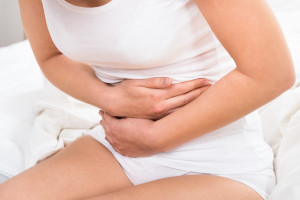 Endometriosis is a painful disease that strikes over 176 million women worldwide. It is a chronic disease in which endometrial tissue is found outside of the uterus. It can be attached anywhere inside of the abdomen, but it is sometimes discovered in other areas such as the lungs, legs and rectum. This tissue acts like the endometrium (lining of the uterus). Every month, it builds up, then bleeds, then tries to shed like the lining of the uterus. The problem is that this tissue has nowhere to exit the body. It remains inside of the abdomen and becomes scar tissue, adhering to the surrounding organs. This can cause tremendous pain for the woman and can reduce her possibilities of bearing a child.
Endometriosis is a painful disease that strikes over 176 million women worldwide. It is a chronic disease in which endometrial tissue is found outside of the uterus. It can be attached anywhere inside of the abdomen, but it is sometimes discovered in other areas such as the lungs, legs and rectum. This tissue acts like the endometrium (lining of the uterus). Every month, it builds up, then bleeds, then tries to shed like the lining of the uterus. The problem is that this tissue has nowhere to exit the body. It remains inside of the abdomen and becomes scar tissue, adhering to the surrounding organs. This can cause tremendous pain for the woman and can reduce her possibilities of bearing a child.
Theoretical causes of endometriosis.
- There is speculation that the immune system of the patient is weaker than that of those who don’t have the affliction.
- A genetic link is suspected between women with endometriosis and close relatives who have the disease.
- A link between endometriosis and the toxin, dioxin has been discovered. Dioxin is a byproduct of pesticides and chemical incineration of medical supplies.
Symptoms
- Very heavy periods
- Long periods lasting more than 7 days
- Pain during and after sexual intercourse
- Pain while urinating
- Pain with bowel movements
- Pain while exercising
- Frequent vaginal yeast infections
- Nausea or vomiting
- Infertility
- Fatigue
Diagnosis
Unfortunately, there isn’t a blood test, urine test, pelvic exam, or any other relatively easy way to determine if a woman has endometriosis. This is why the disease can go undetected for a long period of time before a diagnosis can be determined. The only way to truly find out if the disease is present is by laparoscopic means. Laparoscopic surgery is an outpatient procedure, but it is invasive and has its own risks.
Treatments: Although there are various treatments, there is no cure for this disease.
- Management of pain with analgesics and heating pads is common.
- Hormone therapy through injections or oral contraception
- Laparoscopic surgery to remove scar tissue built up in the abdomen
- Pregnancy can alleviate symptoms for a period of time since the menstrual cycle stops during the pregnancy. Since it can continue occurring once menstruation begins, it is not considered a cure.
- Ablation, which removes the endometrial lining, can ease symptoms. It should not be looked at as a cure since it can grow back.
- Hysterectomy
- Alternative treatments such as acupuncture and acupressure can be used to help alleviate pain.
It is highly recommended that women experiencing the above symptoms contact an ob/gyn. If diagnosed with endometriosis, women can find a wealth of resources and support groups online. That, combined with communicating with your ob/gyn about options and treatments, can help to reduce the anxiety that can occur with living with this chronic disease.
Contact the physicians at IPALC.org to find an ob/gyn in your area.
Share on Facebook



 Southwest Florida Medicine.com is dedicated to bringing you the very best health information available today!
Subscribe or check back regularly!
Southwest Florida Medicine.com is dedicated to bringing you the very best health information available today!
Subscribe or check back regularly!